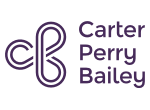
ONE MILLION businesses are using the Coronavirus Job Retention Scheme to fund the wages of 7.5 million employees at a cost to the government of £12bn a month. The scheme, under which employers may apply for government grants equivalent to 80% of furloughed employees’ pay, has been a lifeline to firms in peril as a result of the Covid-19 pandemic.
Operated through HMRC, the scheme has twice been extended and will now run until at least 31 October 2020.
Here we consider some of the important FAQs, updated to reflect the latest guidance. The position is stated as at 18 May 2020.
Can any UK business claim?
Pretty much. Any UK organisation with a PAYE payroll scheme (as at 19 March 2020), a PAYE online account, and a UK bank account will be able to claim. The claims portal went live on 20 April 2020 and is available here.
What is “furlough”?
“Furlough” describes a period of temporary leave. However, to qualify for the scheme, the reason for furlough must be “circumstances arising as a result of the coronavirus” – even if the employee would not otherwise have been made redundant.
Would I need an employee’s consent before placing them on furlough?
Yes. To be eligible, the employer and employee must have agreed in writing that the employee will cease work. Previously, the decision to furlough need only have been “notified” to the employee in writing.
Who counts as an “employee” for the purposes of the scheme?
Firms may claim for employees of any nationality and on any type of contract, including: full-time, part-time, fixed-term, agency and zero-hour. Certain other groups (e.g. office holders such as company directors and salaried members of LLPs) are also covered by the scheme. However, in each case, they must have been on the firm’s PAYE payroll and notified to HMRC on an RTI submission on or before 19 March 2020.
Firms may also rehire employees dismissed for whatever reason on or after 28 February 2020, furlough them and still benefit from the scheme, provided the eligibility criteria are met. However, firms are not obliged to re-hire such employees, nor even to retain employees once furlough ends.
Subject to the above, firms will not be able to claim for employees hired after 19 March 2020.
Furloughed employees must not undertake any work, although an exception is made for nonrevenue generating “volunteer work or training”.
What can I claim?
80% of an employee’s regular pay or £2,500, whichever is the lower, plus associated Employer National Insurance contributions and minimum automatic enrolment employer pension contributions. Pay for these purposes includes wages, past overtime, “fees” and contractual commission. Discretionary payments (e.g. discretionary bonuses and tips) and benefits in kind are excluded.
Claims can be backdated to 1 March 2020 if applicable.
Firms may choose to top-up to 100%, but they will not be able to recover the difference.
How do I calculate earnings for a zero-hours / variable pay employee?
For zero-hours / variable pay employees with a full 12 months’ service before the claim, firms will be able to claim for the higher of either:
– the same month’s earning from the previous year; or
– average monthly earnings from the 19/20 tax year.
For zero-hours / variable pay employees with less than 12 months’ service before the claim, firms will be able to claim for an average of their monthly earnings since they started work.
Can I part-furlough an employee and still benefit from the scheme? E.g., can I reduce someone’s working days from five to three and furlough them for two?
Not at the moment, but this is likely to change from August 2020.The government is due to publish details by the end of May 2020.
How often can I furlough someone, and how often can I claim?
Firms will not be able to claim for any employee furloughed for less than three consecutive weeks. Theoretically, though, it would seem that firms may rotate employees on furlough. For example, they might alternate John and Jane, three weeks on, three weeks off.
There does not appear to be any limit on the number of times a firm can claim. That said, firms will not be allowed to submit more than one claim every three weeks (which, as above, is the minimum duration of any one period of furlough).
Can I furlough a newly TUPE’d employee?
Yes, you can furlough a newly TUPE’d employee even if they transferred after 28 February 2020.
Can I furlough someone who is off sick?
Yes, you can furlough an employee currently off sick.
Does a furloughed employee have any rights?
Yes. Employees on furlough retain their employment status and continuity of service. They also remain entitled to maternity rights, other paternal rights, rights against unfair dismissal and to redundancy payments. Employees may even take annual leave while on furlough, with firms having to cover 100% of normal pay. However, furloughed employees do not qualify for statutory sick pay (SSP).
Updated 18 May 2020

Joseph Sutton
Consultant
T: 0203 697 1900
M: 07866 441249
”This information has been prepared by Carter Perry Bailey LLP as a general guide only and does not constitute advice on any specific matter. We recommend that you seek professional advice before taking action. No liability can be accepted by us for any action taken or not as a result of this information, Carter Perry Bailey LLP is a limited liability partnership registered in England and Wales, registered number OC344698 and is authorised and regulated by the Solicitors Regulation Authority. A list of members is available for inspection at the registered office 10 Lloyd’s Avenue, London, EC3N 3AJ.”





